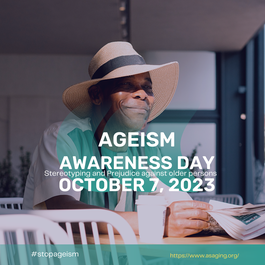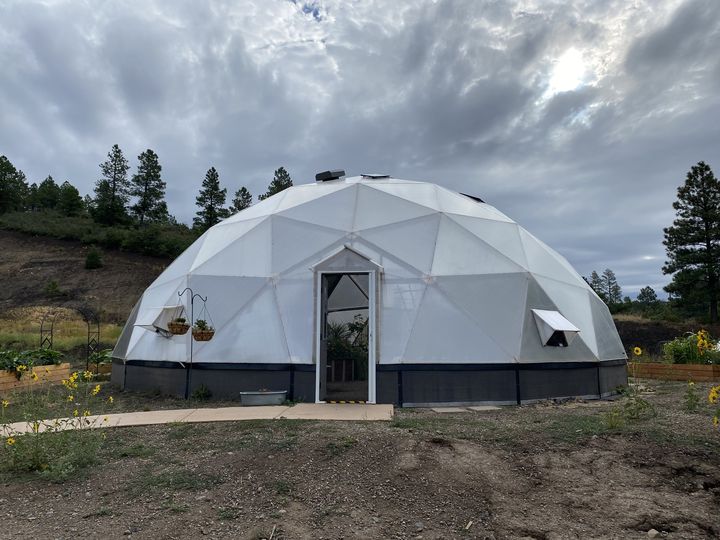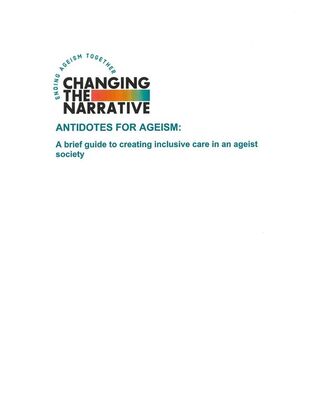|
New Classes: Tai Chi and Mindfulness Meditation on Thursdays
In our youth obsessed culture, there is a lot of fear and anxiety about growing older. Aging is a natural part of life, and it can be a time of great fulfillment, growth, and joy. The Pagosa Senior Center will be offering T’ai Chi Chih with accredited instructor Patti Popovich starting January 4, 2023 and continuing each Thursday in the new year from 1:30 pm to 2:30 pm and longtime local practitioner Udgar Parsons will offer a mindfulness based meditation classes from 3-4 pm in the dining hall to support older adults who want to discover purpose and fulfillment in this transitional phase of life. Tai Chi Chih and mindfulness based meditation are not martial arts, but rather tools for self-healing. Softness, flow and effortlessness are the guiding principles in these practices. For Tai Chi, it will include 19 easy to learn movements and one pose designed to stimulate, circulate and balance the vital energy, or universal life force, referred to as ‘Qi’, which is inherent in all of us. T’ai Chi Chich is often thought of as a moving meditation because of the calming effect on the mind and emotions, and the release of tension throughout the body. All classes will be free for older adults (age 60 and better) and will last approximately 1 hour in the dining hall. No special clothing or equipment is required for either class. We are here to support you and the community on our collective healing journey. For more information contact rosa@psseniors.org or call 970-264-2167. Happy holidays from Archuleta Seniors Inc! Shout out to all those who joined us last week for our Christmas party. We had over 60 folks dine in with us and enjoyed the music and snow ball fight along with some shenanigans with Santa. Wishing you all a happy new year, all the best in 2024!
 The American Society on Aging Joins Allies Across the Globe in Celebration of Ageism Awareness Day Pagosa Springs – Archuleta Seniors Inc. and the American Society on Aging (www.asaging.org) encourage everyone to celebrate Ageism Awareness Day on Oct. 7, 2023. Modeled after the United Nations International Day of Older Persons (Oct. 1), Ageism Awareness Day provides an opportunity to draw attention to the existence and impact of ageism in our society. “We live in an aging society, which is a wonderful, remarkable thing,” says ASA’s Interim President & CEO Leanne Clark-Shirley, PhD. “But too many of us view aging with fear, denial and even hostility. We are all growing older. We can’t afford to limit ourselves and other people with such negative and harmful views, and why would we want to? Let’s lean into the opportunities, diversity and full range of experiences that come with aging.” The most widespread and socially accepted form of prejudice, ageism is defined by the World Health Organization as “the stereotypes (how we think), prejudices (how we feel) and discrimination (how we act) towards others or oneself based on age.” Evidence shows ageism is widespread in society and can be found everywhere, from our workplaces and health systems to stereotypes we see on TV, advertising and in the media. In a recent webinar from Changing the Narrative – Ending Ageism Together (www.changingthenarrativeco.org) on “Ageism in Healthcare,” speaker Kirs Geerken, Program Manager, said that ageism can shorten the lifespan by 7.5 years, hinder recovery, increase cognitive decline, social isolation and loneliness, and increase anxiety and depression. During the 21st Annual Pagosa Springs Spanish Fiesta that took place this past July 29, 2023, community members of all ages joined together with Archuleta Seniors Inc. to celebrate the rich Hispanic, Native and Anglo heritage of Archuleta County with music, libations, dancing, vendors, color and more. Along with all the wonderful memories made over $20,000 was fundraised to benefit the older adults of Archuleta County along with 15% of net proceeds, or just over $3000, going into the newly established Intergenerational Fiesta Hispanic and BIPOC Scholarship Fund. Scholarships specifically for BIPOC (black, indigenous, people of color) or Hispanic youth going on to education beyond high school were part of fundraising historically by the Hispanic community. There have not been scholarships dedicated exclusively to BIPOC or Hispanic youth in Archuleta County since at least 2006. Those under 18 who come from underserved families are approximately 17% or 663 youth, who could compete for the scholarships. Reestablishing the scholarship program helps support the educational aspirations of these youth. Archuleta Seniors Inc. proposed to collaborate with the community; the path forward is intergenerational; the essence is our elderly community members working with our younger community members i.e., students, to create the future by investing in education for the underserved from our county. In the past, Spanish Fiestas were one of the ways funds were raised for the scholarships. Per se, the Spanish Fiesta is not new, but was re-established after a 20-year hiatus this year, 2023. The Spanish Fiestas educate the public on the history and diversity of indigenous/native and early settlers in this region, most of which exists in oral history, songs and sayings. Most important has been the inclusion of school age residents to participate in the fiesta and to be awarded scholarships for their efforts. Several Archuleta County entities and individuals had interest in re-establishing this annual event but the explosive growth in the county in the last 20 years had diverted resources and attention. Archuleta Seniors Inc was successful in bringing all those individuals and entities together to form the Spanish Fiesta Committee in January of 2023. Archuleta Seniors Inc has agreed to cover the upfront costs of the 2023 and future fiestas and will share the proceeds with the scholarship program. In addition to the funds raised during the 21st Annual Pagosa Springs Spanish Fiesta, Executive Director, Rose Chavez, applied on behalf of Archuleta Seniors Inc. to the La Plata Electric Association Roundup Foundation board for an additional $2000 dollars. On Monday August 28, 2023, the LPEA Roundup Foundation board announced that they would fully fund Archuleta Seniors Inc. Spanish Fiesta committee Intergenerational Fiesta Hispanic & BIPOC Scholarship Fund. With these additional funds the committee is now set to award 5 $1000 scholarships for the 2024 school year. The Archuleta Seniors Inc. Spanish Fiesta committee is inviting community members to help form the Intergenerational Fiesta Hispanic & BIPOC Scholarship Fund committee this fall and winter. This committee will be instrumental in determining the criteria for the scholarships and promoting the scholarship fund to the community to generate applicants from amongst individuals seeking higher education opportunities. If you are interested please contact executive director, Rose Chavez, at rosa@psseniors.org for more information and additional details. Archuleta Seniors Inc. Celebrates & Thanks 50 Plus Volunteers
Friday, August 25, 2023 was an evening of celebration and giving thanks for the fifty plus volunteers and their families that joined the staff of Archuleta Seniors Inc and their board of directors for dinner and a presentation to thank them for their countless hours of support that makes the organization so meaningful to so many in Archuleta County. During 2022, volunteers provided an estimated 2,500 hours in kitchen/administrative tasks, delivering meals, providing for games/activities and fundraising. ASI’s mission is “To promote independence and advance community resilience by empowering individuals who are 60 years old and better, their families, and other community stakeholders.” The organization and its programming work directly to improve the wellbeing of older adults and the community in areas widely considered to be social determinants of health – nutrition security, social connections, physical/built environment and housing – and access (transportation) to services. ASI provides a safety net for those who can quickly find themselves living in peril, providing home-cooked quality meals, supplemental nutrition (e.g. “Boost”), at-home wellness checks and monitoring devices, educational workshops and resources/materials, and congregate social activities. Assisting all individuals in need ages 55+ years, the desired outcomes for this work are for at-risk older adults to: o Remain in their homes o Have regular and reliable nutritional sustenance, and access/referrals to other resources meeting basic needs o Retain physical and emotional wellness, and o Establish/sustain social connectedness. Further, ASI provides access/referrals for caregivers of at-risk older adults to various supports that sustain them in their caregiving role. No other organization in the community provides similar daily services. Chef Cynthia Sperry devised a delicious Greek themed menu celebrating the heart healthy, nutritious and delicious mediterranean fare including the following menu for appetizer roasted red pepper hummus with garlic naan bread and stuffed grape leaves, salad of mixed greens with red bell pepper, onion, kalamata olives, cucumber, heirloom tomatoes, artichoke hearts and feta cheese, for the main course yogurt marinated Greek chicken, spanakopitas, lemon orzo and tzatziki sauce; vegetarian meal centered a giant stuffed portabella mushroom and for desert a pistachio baklava cheesecake all made in house for our guests. Executive director Rose Chavez welcomed and thanked volunteers while staff Barbara Noriega and Janet Monks provided the guests with some short anecdotes made by the volunteers who had shared about why they are so motivated to volunteer with ASI. Of note were a few volunteers that have been with the organization for almost 20 years that were acknowledged and thanked for their selfless services for so many years. In reflecting on the past year, Archuleta Seniors Inc. is exceedingly grateful for all the support received from within and beyond the community, ensuring continued provision of critical services while positioning the organization for planned expansion of programming in coming months. All the guests enjoyed mingling with each other, enjoying beverages, dinner and dessert. Archuleta Seniors Inc. could not be of service in this community without our volunteers and community members supporting us every step of the way. We are blessed to do the work we do and call Pagosa home. Thank you community and please don’t hesitate to reach out if you or someone you know is in need of our services or you would like to volunteer. Please contact us at 970.264.2167 or stop by the Pagosa Senior Center at 451 Hot Springs Blvd. in the Ross Aragon Community Center. . You may be wondering why we made a special Thanksgiving meal in August…we are so Thankful!!! Late last year the Area Agency on Aging in S.W.Colorado informed us that we had been selected to receive funds through the American Resue Plan Act (ARPA) to purchase a growing dome for our senior center! We purchased an existing 42’dome on the Growing Spaces campus and have hired an amazing horticulturist named Kelle Bruno who has this gift of growing fresh organic food! Here’s some pictures of the dome and our first veg planning session. Other Colorado towns receiving growing domes through the AAA of SW CO are Towaoc, Ignacio and Silverton. Thank you to Christina Knoell AAA and the Biden Administration!
Thanks to everyone who attended our Spanish Fiesta committee meeting today! What a great group of people coming together to revive such an important aspect of our community, our cultura! Everyone is welcome to join in on the planning and volunteering for our first fiesta in 23 years! The 21st Annual Spanish Fiesta will be Saturday January 29, 2023 from 3 to 8 pm at the Archuleta County Fair Groups. Ticketing will be available very soon. Stay tuned for more details. Our next committee meeting is June 2 @ 10 am in the dining hall of the Ross Aragon Community Center
Archuleta Seniors, Inc.
A wonderful turnout for our Kentucky Derby Fundraiser last weekend sponsored by Exit Realty! A Huge thank you to the Tennyson Event Center for their generous donations, and to Tim Sullivan for the terrific music and for encouraging everyone to sing along and dance away. Thank you to all the community Vendors who donated items for our Silent and Live Auction. Congratulations to those who participated opened their wallets for a good cause and took home many wonderful items. Thank you to all who came to enjoy the festivities, food and drink and a special thank you to all the wonderful Volunteers who helped to put on such a fun Event! We love you all and are already looking forward to next year! Antidotes for Ageism: A Guide to Age-Inclusive Healthcare - Friday, April 14, 12:00 noon – 1 PM at the Pagosa Senior Center
Archuleta Seniors, Inc., will be taking part in the on-line viewing of the film and discussion, Antidotes for Ageism, an original production of Changing the Narrative and the Boulder County Area Agency on Aging. Come join us. As the Changing the Narrative website (https://changingthenarrativeco.org/) states: “The film introduces how ageism shows up in healthcare and what we can do about it. Did you know that ageism is a risk factor that impacts social, emotional, and physical health? It shortens lifespans and increases social isolation.” “Ageism shows up in systems, societal beliefs, and policies: fewer medical students becoming geriatricians, older people historically excluded from clinical trials, and the pervasiveness of ageism during the pandemic. People suffer unnecessarily when structures and systems are consciously or unconsciously rife with ageism.” The film, 16 minutes, is a compilation of interviews with professionals who serve older adults and are experts in their fields. Learn from their insights about what ageism is and how it shows up in healthcare settings. Inspire your community to take actionable steps that will remove ageism from healthcare. If you would like to have lunch, you must call or text 970.264.2167 before Friday or by 9AM Friday. The lunch is Pork Ramen Bowl, Spring Roll, Garden Salad and Fruit. Suggested donation is $10 to cover costs, but not required Music During Lunch
We’ve heard from our community that they’d love to have musical performances a few times a week to accompany our delicious and nutritious from scratch meals. The Senior Center currently has a piano that is in need of repair and we’d like to eventually undertake that repair (volunteers are welcome to help) to bring music back to the dining hall. In the interim we invite the community to reach out to us and schedule a free musical performance to serenade the seniors and community during lunch time. While take out and grab in go are very popular among our community we want to remind the community that we are open four days a week for dine in services and we are hoping to sweeten the deal with music and community connection downtown in our dining hall at the Ross Aragon Community Center. Stay tuned for a future schedule, we look forward to showcasing some of Pagosa’s local talent. If you are musically inclined/talented and would like to share your gifts, please contact rosa@psseniors.org. |

 RSS Feed
RSS Feed



